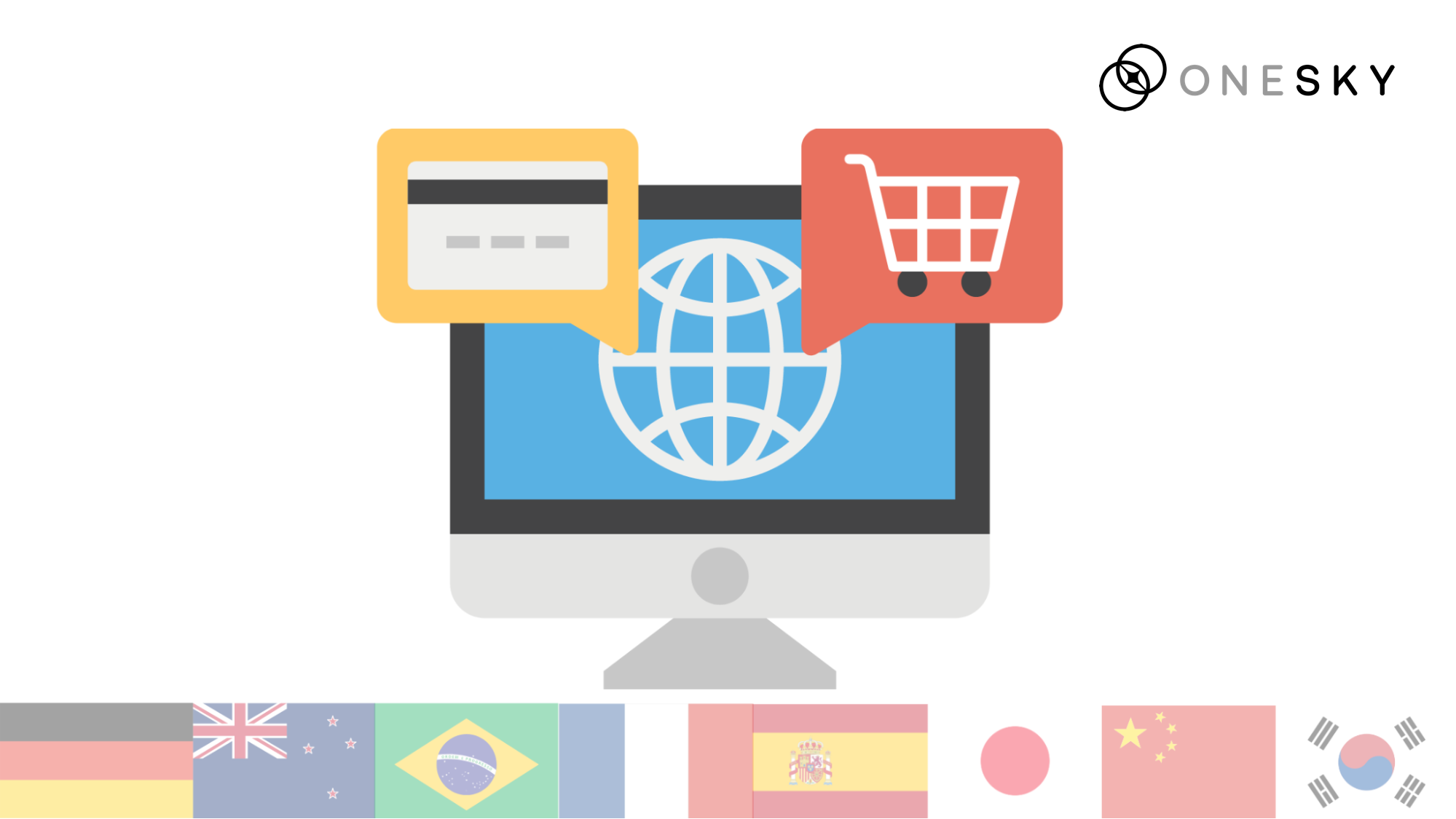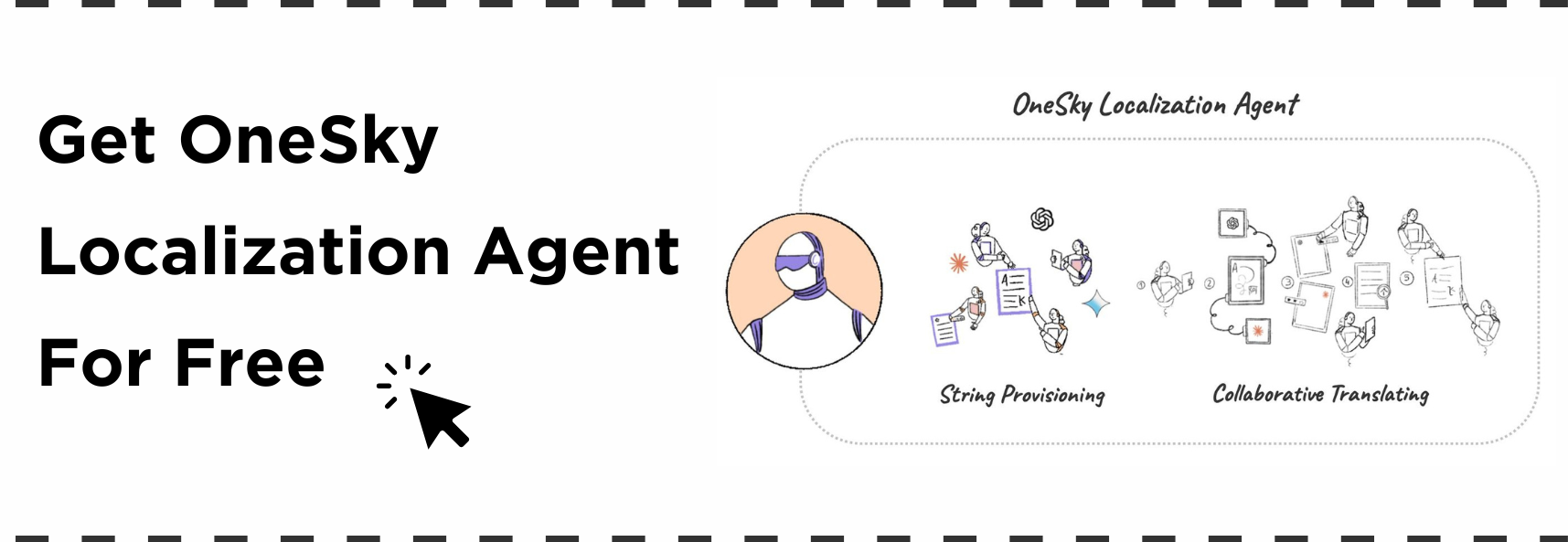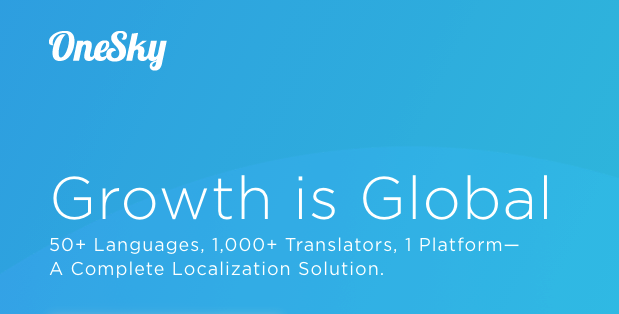Master E-commerce Localization with OneSky
In today’s rapidly growing and interconnected world, e-commerce localization is critical for reaching and engaging global markets effectively. As online shopping continues to grow, businesses must tailor their ecommerce platforms to various cultural and linguistic environments to maximize international customer engagement and conversion rates.
The global number of online shoppers is projected to reach 2.77 billion by 2025, reflecting consistent growth over the past five years. This trend highlights the importance of localizing your ecommerce website to meet the preferences of your target audience.

Source: Oberlo
In this article, we’ll look into the importance of e-commerce localization, find out the common challenges, and explore how leveraging the right technology can help you streamline your localization process.
The Importance of E-commerce Localization
E-commerce localization involves adapting your e-commerce site to meet the linguistic, cultural, and functional requirements of local markets. This process goes beyond simple translation to include cultural nuances, payment methods, local currency, and even customer support preferences.
Significance in the Global Market
In the global market, localization is crucial for building trust and customer loyalty. A study by CSA Research found that 60% of online shoppers rarely or never buy from English-only websites. This underscores the necessity of providing a tailored shopping experience that feels native to the target market. Additionally, localized content improves SEO, helping your site rank higher on search engines.
Influence on Buyer Behaviour and Trust
Localization significantly influences buyer behavior. Shoppers are more likely to complete purchases on websites that offer proper product descriptions, checkout processes, return policies, and customer service in their own language. This personalized experience not only boosts conversion rates but also fosters repeat business.
Challenges in E-commerce Localization
As ecommerce businesses expand into international markets, you’ll encounter various challenges that can complicate your localization process. Understanding these challenges is crucial for providing a seamless user experience and maintaining a positive brand perception.
Let’s take a look at some of the most commonly faced challenges by ecommerce businesses;
- Language Nuances: Translating product descriptions and marketing materials isn’t just about converting text from one language to another. Regional dialects, idiomatic expressions, and contextual meanings play a significant role. For instance, a word in British English might have a different connotation in American English.
Accurate and culturally appropriate translation is essential to maintain the intended meaning and tone. Misinterpretations can lead to confusion and mistrust among potential customers.
- Cultural differences: Every market has its unique cultural norms, traditions, and consumer behaviors. What works in one region may not work in another. For example, the color red is considered lucky in China but can signify danger in other cultures. While the white gowns and dresses signify festivities in Western cultures, they can represent either mourning or detachment in India.
Similarly, symbols and imagery that are acceptable in one culture may be offensive in another. For instance, In India, the Swastika is a religious symbol representing good fortune and auspiciousness. Conversely, in Western countries, it is associated with racism, Nazism and hatred.
Understanding and adapting to these cultural differences ensures that your website content resonates with local customers, thereby enhancing customer engagement and conversion rates.
- Legal Compliance: Navigating the legal landscape of different countries is another significant challenge. Regulations related to ecommerce, data privacy, and consumer protection vary widely across regions.
For example, the General Data Protection Regulation (GDPR) in Europe imposes strict data privacy requirements, ensuring compliance with local laws, which is essential to avoid legal issues, fines, and reputational damage.
- Technical Challenges: Integrating localization services into existing ecommerce platforms can be technically demanding. Ensuring that your platform supports multiple languages and can handle various payment methods and currencies is crucial. Additionally, maintaining site speed and performance across different regions requires a robust set of technical solutions.
- Consistency and Quality Control: Maintaining consistency in tone, style, and terminology across different languages and regions is challenging. Ensuring high-quality translations that reflect your brand’s voice and message requires thorough quality control processes. Machine translation services can help, but they often need human expertise to ensure accuracy and appropriateness.
Impact on User Experience and Brand Perception
If not addressed properly, these challenges can significantly impact user experience and brand perception. Poor translations or inappropriate cultural references can lead to confusion, frustration, and loss of trust. For instance, a mistranslated checkout process can deter online shoppers from completing their purchases, leading to decreased conversion rates.
A well-localized ecommerce site that considers language, culture, and legal aspects can improve user experience, build customer trust, and increase ecommerce sales. Moreover, addressing these challenges proactively can differentiate your brand in competitive international markets. By investing in thorough localization efforts, you’ll be able to see enhanced customer loyalty and establish a stronger global presence.
Best Practices for E-commerce Localization
Successfully localizing your online store requires more than just translating text. It involves a comprehensive approach that considers cultural nuances, local preferences, and technical adjustments. By implementing these best practices, you can enhance the customer experience and boost conversion rates across international markets.
Here are some effective strategies for localization
- Product descriptions: Tailor product descriptions to resonate with the target audience in different local markets. This involves not just translating text but also adjusting the tone and style to match local preferences. For instance, using colloquial language in casual product categories can make the descriptions more relatable.
- User Interfaces: Localizing the user interface (UI) of your ecommerce platform is very crucial for ensuring a seamless user experience. This includes translating menu items, buttons, and other navigational elements. Additionally, consider the layout and design preferences of local customers, as these can vary widely across cultures.
- Customer Service: Offering adequate customer support in your customers’ desired or native language can significantly enhance their experience. This includes localized FAQs, chatbots, and customer service representatives who understand cultural nuances. Providing support in different languages can build trust and loyalty.
- Marketing Materials: Localize marketing materials such as email campaigns, social media posts, and advertisements to reflect local customs and cultural references. This can increase engagement and relevance, making your marketing efforts more effective in international markets.
Cultural Adaptation Beyond Translation
Reaching your global audience is just the beginning, but if you truly want to connect with your target market, it is essential to go beyond simple translation and consider deeper cultural elements. This involves understanding local customs, preferences, and behaviors to ensure your ecommerce localization and marketing strategy resonates effectively with local customers.
- Local Customs: Understand and incorporate local customs and traditions into your ecommerce localization strategy. This can include recognizing local holidays, festivals, and cultural events in your promotions and marketing campaigns.
- Payment Preferences: People from different regions have different preferred payment methods. Forbes reported that more than 26% of mobile shoppers abandon the checkout process due to user inconvenience. Offering local payment options such as regional credit cards, digital wallets, or even cash on delivery can improve checkout process completion rates.
- Seasonal Promotions: Align your promotional activities with local seasons and holidays. Over 51% of online shoppers initially begin their product search on Amazon, and Amazon recorded more than $1 billion in sales through small businesses over the five days between Thanksgiving-through-Cyber-Monday sale.

Source: JungleSource
- Visual Design Preferences: Adapt the visual design of your ecommerce store to align with local aesthetic preferences. This can include colors, fonts, designs, and imagery that resonate with the local culture. For example, minimalist design is popular in Scandinavian countries, while more vibrant and colorful designs may appeal to markets in South America.
- Local Language Variations: Even within the same language, there can be significant regional variations. Ensure that your content reflects these differences to connect more deeply with local audiences. For instance, the Spanish spoken in Mexico differs from that spoken in Spain, both in vocabulary and some grammatical structures.
- Local Influencers and Testimonials: Utilize local influencers and customer testimonials to build credibility and trust. Featuring well-known local personalities giving positive feedback about your product or services can enhance your brand’s appeal and trustworthiness in the region.
Many businesses operating on a global scale have benefitted by localizing their ecommerce websites.
For instance, Airbnb, operating in over 191 countries and available in 62 languages, has reported record sales with a 67% revenue increase, reaching $2.2 billion.
Through ecommerce website localization in countries such as Brazil, Morocco, Saudi Arabia (and five other countries,) Zara’s sales and profits surged over 10% in the first quarter, increasing from $653 million to $734 million.
Leveraging Technology for Efficient Localization
In the fast-paced world of global ecommerce, leveraging technology is essential for efficient localization. Having an advanced translation management system, such as OneSky, can streamline your business’s localization process, making it easier to manage multilingual content across different markets.
Streamlining the Localization Process
OneSky offers a range of features designed to simplify and enhance your localization efforts:
- Automated Workflows: OneSky’s automated workflows reduce the time and effort required to manage translations. These workflows can handle repetitive tasks, ensuring consistency and accuracy in translations. Automation helps maintain high-quality localized content while reducing manual intervention.
- Integration with E-commerce Platforms: OneSky integrates seamlessly with major ecommerce platforms like Shopify, Magento, and WooCommerce. This integration allows for smooth content synchronization, ensuring that updates made on the ecommerce site are reflected in all localized versions in real-time. This is crucial for maintaining up-to-date product information and marketing materials. Integration with content management systems also ensures consistency and accuracy across all regions.
- Competitive pricing of hybrid translation (AI-Human) service: OneSky leverages this hybrid approach to enhance translation quality and efficiency. Our system integrates advanced AI tools for initial translation and translation memory while ensuring that native speakers and certified translators review and refine the content. This collaboration ensures high-quality, culturally appropriate translations that resonate with the target audience.
Benefits of Partnering with OneSky
Partnering up with OneSky for your ecommerce localization needs comes with several benefits:
- Scalability: OneSky can easily scale with your business as you expand into new markets. Whether you need to add more languages or manage a larger volume of content, OneSky’s platforms can handle it efficiently.
- Collaborations: OneSky allows easy collaboration between teams, translators, and stakeholders. This ensures that everyone involved in the localization process is on the same page, leading to more effective and cohesive localization efforts.
- Quality Control: OneSky’s platform includes quality control features such as translation memory, glossaries, and in-context review. These tools help maintain the consistency and quality of translations, ensuring that your localized content is accurate and culturally appropriate.
Unlock Global Markets with OneSky
Ecommerce localization is essential for achieving success in international markets. By adapting your ecommerce site to meet the cultural and linguistic preferences of local customers, you can enhance customer experience, build customer trust, and significantly increase your online sales. Proper localization influences buyer behavior and fosters customer loyalty, making it a crucial strategy for any online business looking to expand internationally.
Get OneSky’s comprehensive TMS that can streamline your localization process. With its advanced features like automated workflows, integration with different ecommerce platforms, and real-time content updates, OneSky ensures your localized content is accurate, consistent, and culturally appropriate.Unlock your global ecommerce potential by partnering with OneSky and enhancing your localization efforts.




 Written by -
Written by - 


 Written by
Written by 


